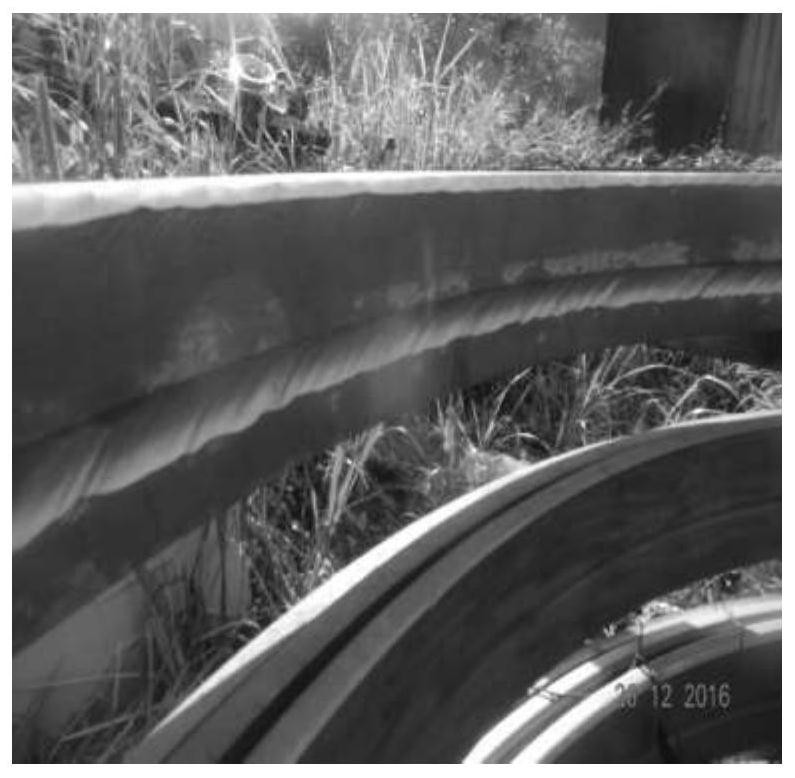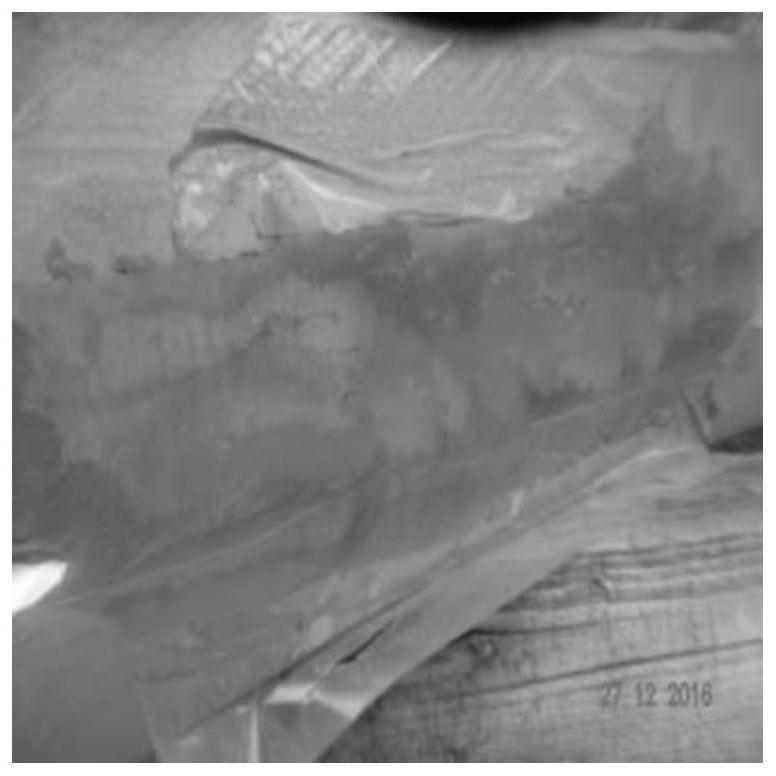Method for improving rapid cold repair strength of abrasion damage of flow passage component of water turbine
A technology of flow-passing parts and water turbines, which is applied in the direction of hydropower generation, can solve the problems of low safety risk and short construction period, and achieve the effect of stable process, short construction period and good repeatability
- Summary
- Abstract
- Description
- Claims
- Application Information
AI Technical Summary
Problems solved by technology
Method used
Image
Examples
Embodiment 1
[0027] Example 1: During the minor maintenance of a hydropower plant with high water head and high sediment content, it was found that the vicinity of the guide vane hole of the turbine top cover was severely eroded by sediment, with a depth of 5-10mm, and the size of the abrasive area was 120mm×60mm. The flow cannot be controlled normally, which affects the efficiency of the unit. The method of the present invention is used for repairing. First, the abrasive area around the hole is polished to form a smooth transition at the bottom. The deepest 10mm pit to be repaired is then planted by energy storage welding with a 1mm metal wire. The planting density 2~3 roots / cm 2 . Cut the metal wire higher than the original plane to complete the planting of the wire. Then use 500g of epoxy resin, 25g of φ10μm×300μm carbon fiber and 600g of 100 mesh tungsten carbide powder to mix evenly, and add a certain curing agent to form a viscous filling body. Pour the prepared viscous filling in...
Embodiment 2
[0028] Example 2 Cavitation damage often occurs in the bucket part of an impact turbine, and the main damage area is located on both sides of the water divider. Grind the area until there are no cavitation defects, and smooth the surrounding area, and then use 0.5mm metal wires to plant by energy storage welding, with a planting density of 2 to 3 roots / cm 2 . Cut the metal wire higher than the original plane to complete the planting of the wire. Then use 1000g of epoxy resin, 50g of φ10μm×500μm carbon fiber and 1000g of spherical titanium carbide powder to mix evenly, and add a certain curing agent to form a viscous filling body. Pour the prepared viscous filling into the pit where the metal wire was planted, and after 4 hours of solidification, use a pneumatic grinder to polish to restore the molded line.
Embodiment 3
[0029] Example 3: The martensitic stainless steel anti-leakage ring of a hydropower plant was severely worn, and abrasive grooves with a depth of 2 to 5 mm and a width of 30 mm were formed on the sides of each comb tooth ring, which could no longer play the function of the anti-leakage ring and affected Crew efficiency and safety. The method of the present invention is used for repairing. Firstly, the surrounding area of the abrasive groove is cleaned to form and remove stains, and then 0.5mm metal wires are used to plant by means of energy storage welding, and the planting density is 2 roots / cm 2 . Cut the metal wire higher than the original plane to complete the planting of the wire. To enhance the bonding strength of the repair, 3000g of epoxy resin, 300g of φ10μm×300μm carbon fiber and 2500g of alumina ceramic powder are uniformly mixed, and a certain curing agent is added to form a viscous filler. Pour the viscous filling body into the abrasive pit after sandblasting,...
PUM
| Property | Measurement | Unit |
|---|---|---|
| diameter | aaaaa | aaaaa |
| diameter | aaaaa | aaaaa |
| length | aaaaa | aaaaa |
Abstract
Description
Claims
Application Information
 Login to View More
Login to View More - R&D
- Intellectual Property
- Life Sciences
- Materials
- Tech Scout
- Unparalleled Data Quality
- Higher Quality Content
- 60% Fewer Hallucinations
Browse by: Latest US Patents, China's latest patents, Technical Efficacy Thesaurus, Application Domain, Technology Topic, Popular Technical Reports.
© 2025 PatSnap. All rights reserved.Legal|Privacy policy|Modern Slavery Act Transparency Statement|Sitemap|About US| Contact US: help@patsnap.com


